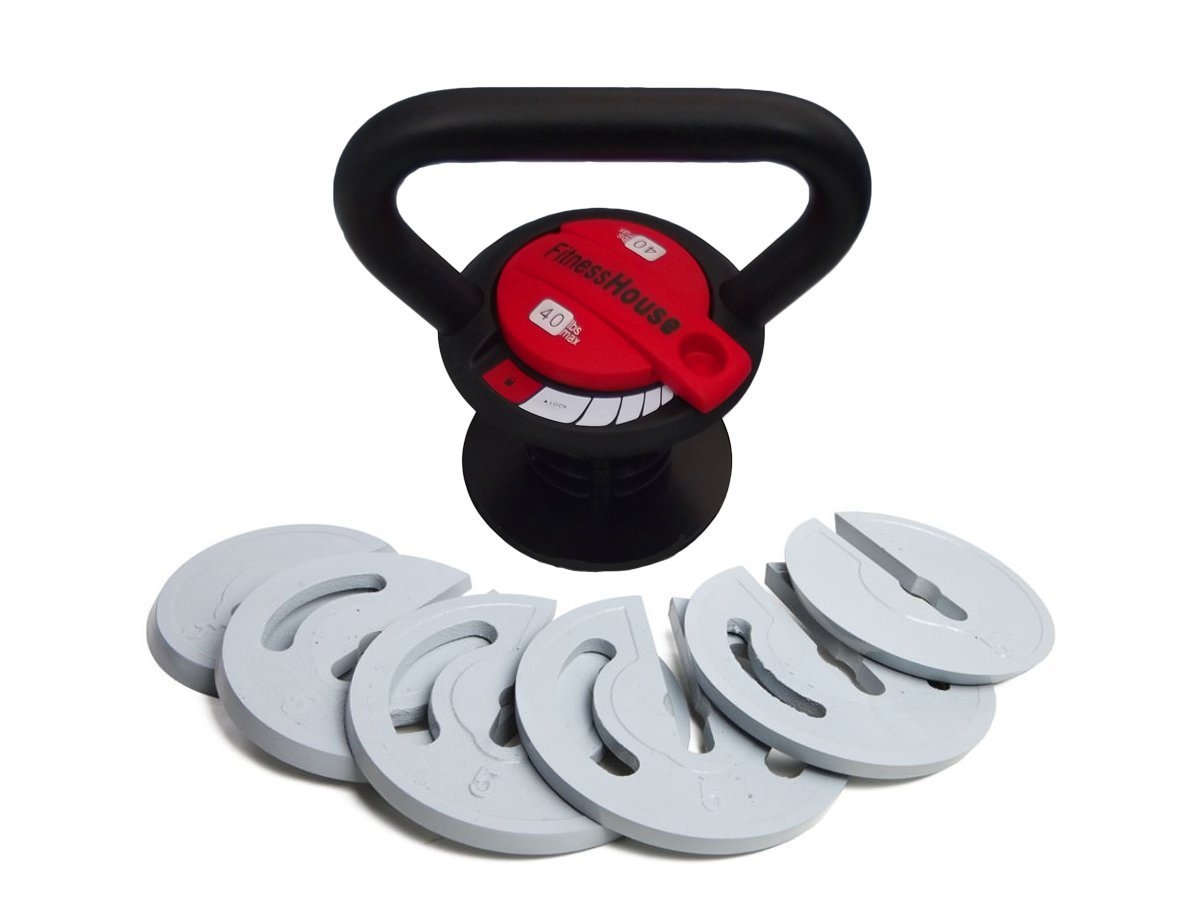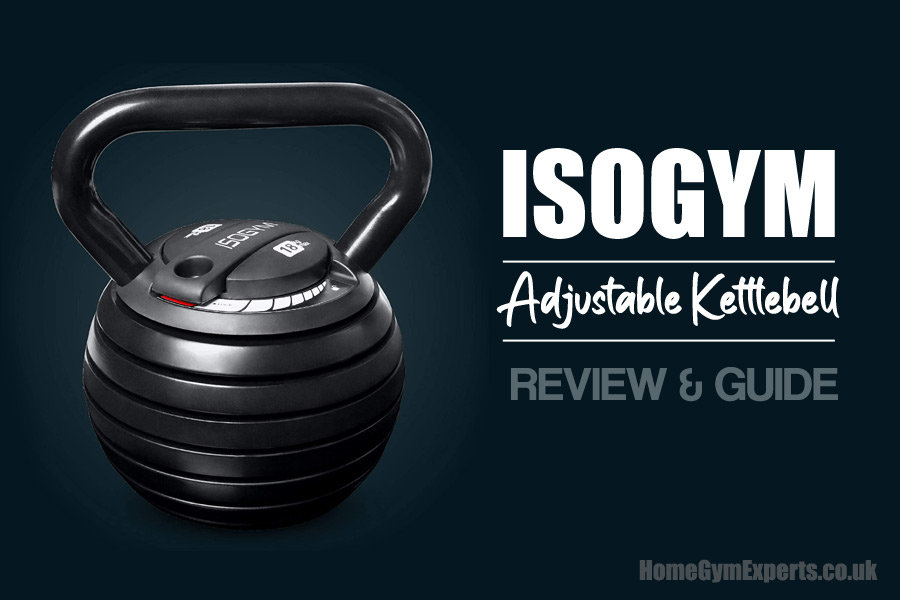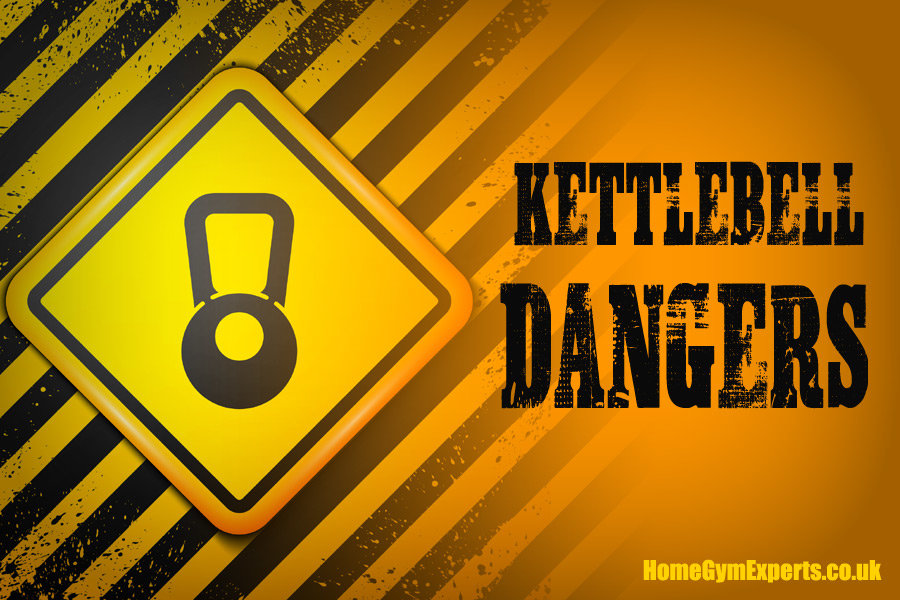Home Gym Showdown: Dumbbells vs. kettlebells
Today we’re answering a question that a lot of people ask: can you use a dumbbell instead of a kettle bell?
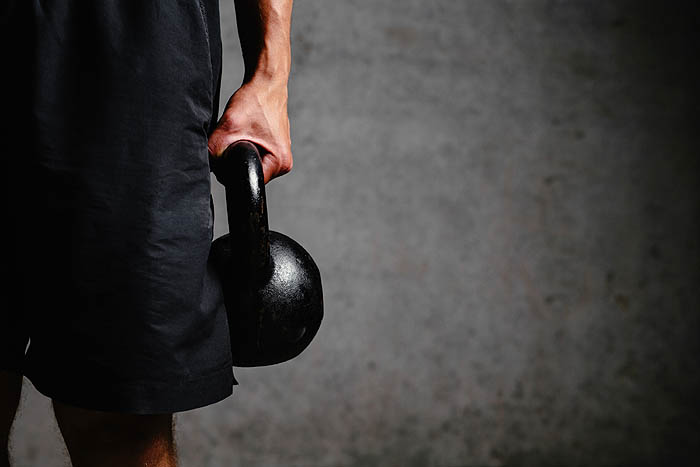
Weight-training and weight-lifting are two important aspects of exercising and staying healthy. For these, gym trainers and enthusiasts use dumbbells, kettlebells and many other such types of equipment to increase efficiency.
If you’re trying to decide if you should get a kettlebell or a dumbbell first for your home gym, then this guide is for you. We’ll look at what each hand held weight does, how hard it is to use each and which one you might want to start out with.
Kettlebells & Dumbbells – for anyone new!
This section is for anyone new to strength training at home who might not know their dumbbell from their barbell or might be unsure exactly what counts as a kettlebell. If you’re already pop-eye, you can skip this section.
What are Dumbbells?
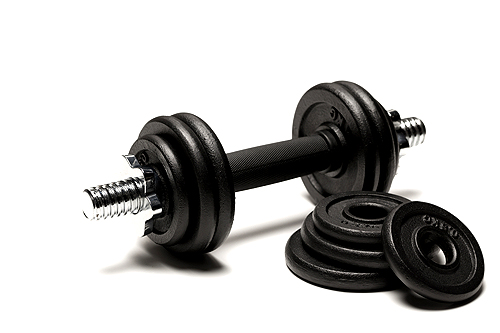
Dumbbells are short form, hand-held weights that are typically held in one hand at a time (although there’s really no hard or fast rules there).
They’re basically two weights joined together with a hand grip and are used for weight training and weight lifting. Essentially, dumbbells can be used for any type of exercise ranging from push-ups to squats. They are versatile in every sense.
Most popular dumbbell exercises:
- Bicep curl
- Shoulder press
- Bench press
- Tricep kickback
What are kettlebells?

Another kind of free weight equipment is the humble kettlebell. Normally some form of canon ball shape, with a large handle, Kettlebells are made up of cast iron or steel, with a handle on the top. They are usually used for ballistic exercises.
Most popular kettlebell exercises:
- Swing
- Kettlebell front squat
- Clean and Press
- Snatch
Do you handle kettlebells and dumbbells differently?
The kettlebell allows you to push your hand through the handle and hold the weight with an open palm. On the other hand, it is impossible to do the same with dumbbells.
With dumbbells, you have to keep a tight grip of the weight all the time, which is not suitable for dynamic exercises.
What’s the Main Differences Between Dumbbells and Kettlebells?
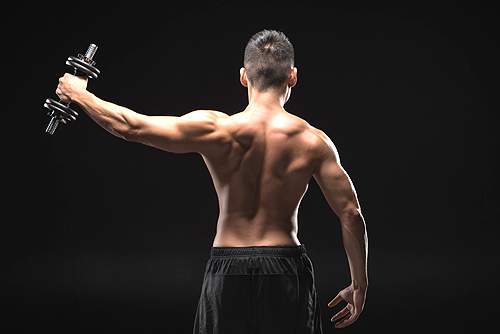
Let’s take a look at some of the differences between dumbbells and kettlebells that affect their use in your home gym
1. They’re completely different shapes
Let’s start with a bit of a no brainer and look at how different these weights are from each other. Dumbbells have that familiar symmetrical shape, whereas kettlebells have their distinctive cannonball with a handle form.
You can get storage racks for both and it’s not a bad idea with kettlebells. For some reason, they always seem to get in the way more, trip you up more often and just hurt a lot more when you knock into them.
2. Kettlebells and dumbbells have very different handles
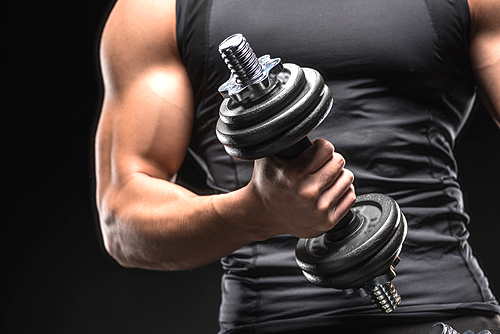
Another whopping difference lies in the way you handle both dumbbells and kettlebells.
Normally, you can easily secure a tight grip on the surfaces of the dumbbells. So, the surface is firm. On the other hand, kettlebells have a smoother surface, owing to their use.
Kettlebells ensure a smooth surface as the movements are ballistic and you have to be able to move the handle easily. So, dumbbells can’t give you a proper and effortless grip for repetitive sets of ballistic movements.
You can only hold your dumbbell in one way, that is through the handle. However, kettlebells are more flexible. They offer various ways of holding the equipment like a pistol grip, palm grip, side handle, etc.
3. The weight is balanced on a dumbbell, but not on a kettlebell
Another huge difference between kettlebells and dumbbells lies in the balance and distribution of the weight.
Technically, you’re getting hold of a handle and fighting gravity in one way or another, but there’s some big differences between the two tools.
Dumbbells are symmetrical and the weight is evenly balanced both vertically and horizontally.
With a kettlebell, the weight is below the handle, creating that awkward (in a good way) lumbering, swinging feeling.
4. Kettlebells come in fewer increments
Depending on what kind of dumbbell set you buy, you can often creep up the weight in teeny increments of a quarter of a KG at a time. Not so with kettlebells. Those weighty beasts jump up in larger increments, rarely less than 2 – 4 kg at a time.
While this isn’t necessary worse as such you’ll often face a bit of a leap when your current one is feeling a bit on the light side.
5. What are the differences in price?
Dumbbells and kettlebells aren’t exactly cheap. If you buy anything other than the absolute cheapest ones, a good pair of weights, or dumbbells can often cost around the £100 mark, with price going up as the weight increases.
6. You’ll generally only need one kettlebell, but will need two dumbbells
While there’s umpteen exercises you can bash out with a single dumbbell, you’re really making it hard on yourself and missing out on a lot of what this weight has to offer. Thankfully, they’re usually sold in pairs and we can’t imagine anyone just buying one.
Kettlebells on the other hand are the opposite. You can do lots of exercise if you’ve got two of the same weight but you’ll generally find them being used in gyms and homes on their own.
Can I Use Dumbbells for Kettlebell Exercises?
You can do most kettlebell exercises with dumbbells but it is probably a bad idea to do so.
The beauty of the kettlebell is the way the weight is distributed and the way the handle is fixed to it. It’s designed to have an imbalanced weight to suit dynamic exercises and swing movements.
For example, if you are doing a kettlebell snatch exercise, you can move the weight behind your head easily. However, you cannot do the same with your dumbbells and it changes the whole meaning of the exercise.
In short, no you should not substitute dumbbells for kettlebell exercises. It might seem like you are doing the same movements, but the core demands are not the same.
What’s easier to use: dumbbells or kettlebells?
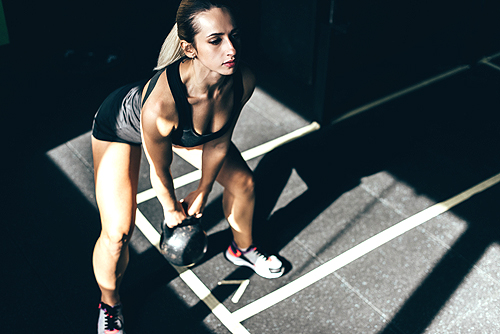
That one’s easy to answer. Dumbbells are definitely more beginner friendly.
Because of the nature of the exercises you’ll be doing with a kettle bell (think 10kg of steel whizzing past your kneecaps) you have to be super-focused and not switch off for a minute. They’re heavy, they’re clunky and there is ZERO give in them. (Unlike our beloved rubber hex dumbbells!)
Don’t be scared of kettlebells but just be aware they take a lot of learning and practice to get right. You’re basically chucking a kettlebell around.
Can you do bicep curls with a kettlebell?
Can you train your biceps and triceps with a kettlebell?
Technically yes. Your hand can slip through that handle, palm facing up and you can do a sort of awkward bicep curl. But again, this isn’t recommended.
It depends on the kind of kettlebell you have but, because of the way they’re put together, the hand grip is often very thick and doesn’t let itself well to being picked up dumbbell fashion.
It’s also difficult to imagine a safe way (more on this in a sec) to train your triceps with a kettlebell.
Can you do squats with kettlebells?
Yes! The good news is that it’s fairly straight forwards to replace a dumbbell weight with a kettlebell and do some squats safely. Simply grip the side of the kettlebell handle with both hands raise it up to your chest and perform your squats as you would a dumbbell squat.
The good thing here is that your toes won’t be anywhere near underneath that kettle bell so, if the worst happens, you won’t end up looking like a cartoon Donald Duck after the train has run over his feet.
What are the risks in using kettlebells for dumbbells
A massive problem using a kettlebell in the way you would a dumbbell is that they don’t have the same grip and can often become slick with the slightest moisture from your hands.
For the love of god, don’t do anything where the kettle bell is raised above your head. While this is normal with a dumbbell, in exercises like bench press, it’s an incredibly bad idea with a kettlebell.
Also take care picking up and putting down a kettlebell. Some have very wide, awkward handles that are easy to let slip from your fingers.
Which is Better – Kettlebells or Dumbbells?
The answer is simply none of them is better than the other. Each of them is better at their own exercises that they are designed for.
Kettlebells are great for fast moving, ballistic moves. And for big compound movements that work a lot of your body at the same time.
Dumbbells are brilliant at targeting specific muscle groups and working through a complete body workout.
It’s worth nothing that you can of course target a specific muscle with a kettlebell, or do compound moves with your dumbbells. But the exercises you’ll do with each bit of kit is generally very different.
What should you buy – a kettlebell or a dumbbell?
Kettlebells are the king of dynamic and physical movements. They can help you improve your plyometrics and powerlifting skills tremendously. Also, if you play an explosive sport like basketball, then you should head for a kettlebell workout.
Kettlebell exercises involve your body’s major muscles and give you greater gains. They can also boost your heart rate and work as cardio exercises.
Meanwhile, dumbbells are designed for basic movements. They are perfect for shoulder and chest press movements. They can also be used while doing squats to give you a comprehensive workout.
Using dumbbells for weightlifting can help you improve your strength and general fitness. There is no advantage for kettlebells over dumbbells regarding this manner.
To sum up, each of them is perfect for their own exercises that they are designed for. So, define your fitness goal first, then find out which is best for you.
If you want our advice: If you’re new to home gym training and not sure if kettle bells are for you – start with a dumbbell set. Probably a decent adjustable set. See our guide on some of the best adjustable dumbbells you can get online. Definitely add a dumbbell soon after though.
Final word: Who wins the home gym battle: dumbbells or kettlebells
If you want to use dumbbells as a substitute for your kettlebell workout, it is probably a bad idea. Dumbbells will not fulfil the purpose of kettlebells.
Kettlebells are used for dynamic and explosive exercises, while dumbbells are designed for basic and general fitness exercises.
If you’re only getting one, then go for a set of dumbbells – ideally adjustable ones as they’ll let you find the perfect weight and give you a lighter option if you’re not feeling especially strong that day.
But don’t overlook kettlebells. Yes, they’re awkward and require a bit more attention and time to master, but they build and work your body in a completely different way to their dumbbell siblings.
And one final tip about dumbbells and kettlebells: spend some time learning what you’re doing. There’s countless videos on how to use both tools on youtube. Take care and train safe above all else.


